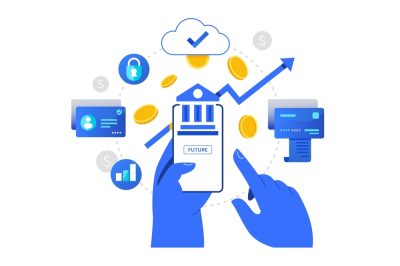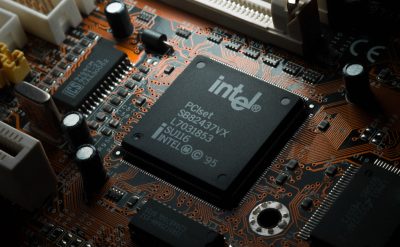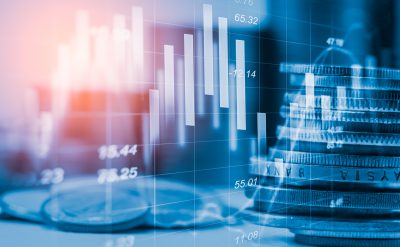Highlights:
- Algorithmic trading relies on pre-programmed algorithms and mathematical formulas to automate trade entry and exit.
- It utilizes real-time data and historical patterns to execute rapid, high-frequency trades, capitalizing on minor, fleeting price disparities.
“We’re facing thousand of stock to pick every day, it’s a very daunting task; By using AI, we can basically scan thousands of stock in real time.” – Alex Lu, CEO and Co-founder of Kavout Corporation
Starting from the very beginning, the way people trade has changed a lot over the years. It began with a simple barter system and has now evolved into something much more complex called algorithmic trading. Important milestones throughout history have marked this evolution. A big part of this change is the use of artificial intelligence and computer algorithms, which have played a crucial role in shaping the way we trade today.
Let’s explore the series in chronological order:
- Barter system
- Currency system
- Middlemen and the Stock Market
- Manual or telephone trading
- Electronic exchanges and online trading platforms
- Full-fledged electronic trading
- Algorithmic trading
The dynamic journey of trading is a living testament to human innovation, the relentless quest for efficiency, and the vibrant allure of profits. Look at this story closely by exploring the core principles and mechanisms behind it.
Riding the Algorithmic Trading Wave: Basic, Mechanism and Example
Algorithmic trading, sometimes known as automated trading, black-box trading, or algo trading, uses a computer program that follows a defined set of instructions (an algorithm) to place a trade. The allure lies in the potential to generate profits with an unmatched speed and frequency that surpasses human capabilities.
It leverages machine learning to construct predictive models that autonomously recognize patterns within extensive datasets. These models then distill signals, providing valuable insights to shape trading strategy.
Inner working of algorithmic trading
Automated trading operates based on programmed algorithms and mathematical formulas. It automates the entry and exit of trades. It is particularly favored by traders engaged in scalp trading, a strategy heavily reliant on technical analysis that entails swift buying and selling of shares.
The following two steps are critical for achieving success:
- The crucial step is to create and thoroughly backtest a well-crafted trading strategy. The effectiveness of this strategy plays a pivotal role in determining the overall success rate of the trades.
- After formulating a trading strategy, transform it into an algorithmic program, which undergoes exchange approval before becoming operational.
To grasp this concept, consider the following scenario:
You’re keen to purchase 1000 shares of company ABC, but only when its price surpasses Rs. 100. Additionally, you’re inclined to buy an extra 10 shares for every point the price goes up and sell 10 shares for every point it decreases.
This situation demands human intervention, hours of monitoring, and manual order execution. Now consider AI’s introduction into this scenario.
Entry of AI in trading: If you have specialized software, you can automate trading actions. You must configure the software to execute buy and sell orders whenever specific price thresholds are met.
You will receive the following advantages as AI is introduced into trading:
- Reduced human error
- Statistical analysis
- Off hours
- Strong execution
Not only this, algo trading leverages real-time data and historical patterns for swift, high-frequency trades to profit from small, short-lived price differences.
The above insights into the basics and inner workings have shown us how effectively AI trading functions. Until we examine the advantages and disadvantages of algorithmic trading, we may not unveil its complete potential and understand the hurdles it presents.
Algo Trade: Boons and Pitfalls
Algorithmic trading, a dynamic force reshaping the landscape of modern finance, is a realm where the interplay of remarkable advantages and distinct challenges creates a compelling narrative.
Pros
- Optimal trade execution: Trades are frequently priced at the most favorable prices.
- Swift execution: Orders are placed instantly and accurately to minimize price fluctuations.
- Backtesting: Algo-trading can be assessed for viability by using historical and real-time data.
- Multi-market surveillance: Provides automated monitoring of diverse market conditions concurrently.
Cons
- Black swan risk: It uses data and models to forecast market moves, but unexpected disruptions (black swan events) can lead to losses.
- Tech dependency: It hinges on technology, such as software and fast internet. Technical glitches can disrupt trading and lead to losses.
- Market impact: Significant algorithmic trades can affect market prices and increase volatility, potentially leading to losses for unprepared traders.
- Regulation: It faces intricate regulatory demands and oversight.
Evaluating algorithmic trading’s pros and cons are essential for traders and institutions, empowering them to make informed decisions when incorporating these strategies into their business processes.
Pro Strategies for Algorithmic Trading Success
Utilizing AI algorithms for trading is a transformative force in finance, providing precision and speed. This examination of strategies employed by algo traders delves into the methodologies used for effective navigation of financial markets.
1) Automated execution strategy
This method uses automation and predefined rules to systematically and efficiently execute trades in algorithmic trading. It benefits institutional investors and large traders by enabling precise control, faster execution, and improved price discovery, leading to favorable outcomes.
2) Position sizing
Position sizing aims to assign the right amount of capital to each trade, considering potential gains and losses to optimize returns while effectively mitigating risk. This approach enables traders to uphold a uniform risk management strategy and prevent overcommitting to individual trades.
3) Volume-weighted average price (VWAP)
When executing large stock trades, this approach divides the trade into smaller volumes to achieve a price close to the historical volume-weighted average price (VWAP). VWAP offers insights into market trends and price efficiency and aids traders in making informed decisions.
4) Trend following strategy
In trading, computerized technical analysis has emerged as a popular trend-following strategy. This approach utilizes indicators such as moving averages and trend lines to inform decisions related to entry points, position sizes, and exits. To ensure effective risk management, traders often employ stop-loss orders to mitigate potential losses, while also establishing specific parameters for profit-taking.
5) Mean reversion strategy
This strategy focuses on the probability of a stock returning to a specific level after experiencing a decline or an increase. Algorithmic traders employ mathematical models and historical data to compute and integrate these levels into their algorithms. The computer autonomously triggers buy or sell orders when a stock strays from this predetermined range.
Algorithmic trading program strategies are diverse and adaptable, tailored to specific objectives and assets. They reflect the finance industry’s ability to evolve and innovate in response to market dynamics, mirroring the dynamic nature of algo-based trading time scales.
Decoding Algo-Trading Time Scales: Precision in Every Tick
A dominant facet of contemporary algorithmic trading is high-frequency trading (HFT), a strategy that seeks to profit from executing a multitude of orders swiftly across various markets. It operates with multiple decision parameters driven by preprogrammed instructions.
It finds application in a variety of trading and investment endeavors, encompassing:
- Longer-term traders and buy-side institutions, such as pension funds, mutual funds, and insurance companies, leverage this trading to acquire substantial quantities of stocks without causing significant price fluctuations due to sizeable transactions.
- Short-term traders and sell-side entities, including market makers (e.g., brokerage firms), speculators, and arbitrageurs, gain advantages from automated trade execution. Moreover, this trading is pivotal in enhancing market liquidity, benefiting sellers.
- Systematic traders find significant efficiency gains in the automation of their trading processes. By meticulously coding their trading strategies and rules, they can delegate the execution to algorithms, allowing for more precise and disciplined trading decisions while minimizing manual intervention.
To summarize, algo trading time scales offer diverse opportunities, spanning high-frequency to longer-term strategies. This adaptability reflects the versatility of algorithm-based trading within the ever-evolving financial landscape.
Concluding Remarks
The future of algorithmic trading appears promising and poised for exponential growth with the advancements in artificial intelligence and machine learning. In the past two decades, major banks and large trading firms have been the primary adopters of algo-based trading. Even retail traders have joined this trend and experienced substantial expansion. As more retailers gain proficiency in the intricacies of algorithm-ruled trading, a significant surge of adoption is anticipated.
The decision is now in your hands – to opt for contemporary algo trading or stick with conventional trading. This choice depends on various factors, which can be boiled down to your trading proficiency, accessible resources and capital, and your willingness to tolerate risk. Novice traders might find it beneficial, to begin with traditional trading to gain a solid understanding of market intricacies before eventually transitioning to algorithmic trading, where experience can lead to enhanced performance.
Enhance your expertise by accessing a range of valuable finance-related whitepapers in our resource center.



























































